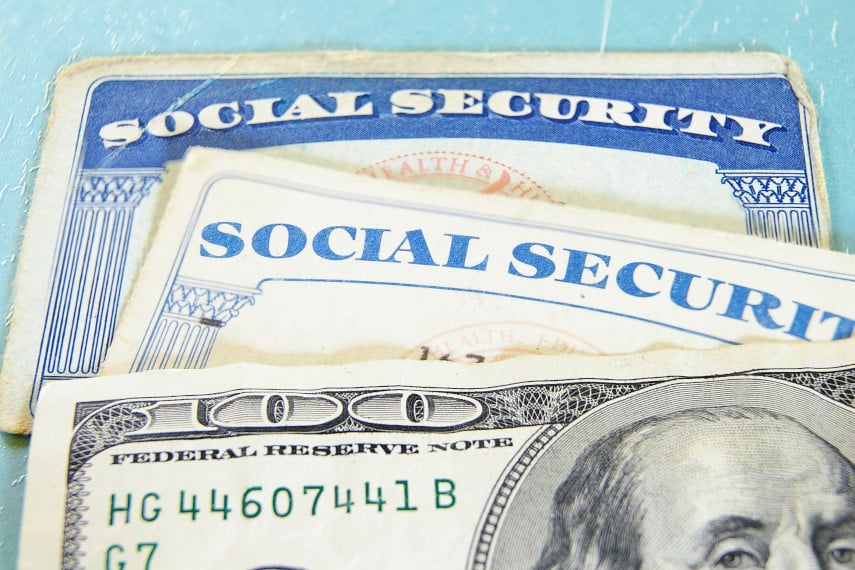
Millions of American retirees receive Social Security payments each month. And while Social Security wasn’t intended to be the sole source of retirement income for retired Americans, many people rely on Social Security for some or even all of their income in retirement. That may be due to poor performance of their investments, losing their pension as their company declares bankruptcy, or for any number of other reasons. And for those who depend on Social Security, there are changes coming in 2020 that may affect how much they receive.
1. COLA Increase in 2020
The first big change to Social Security is that recipients are receiving a cost of living adjustment (COLA) for 2020. Granted, it’s only a 1.6% increase, but that’s better than nothing, which is what many Social Security recipients have received as COLAs in the past. But that increase, for many households, won’t even keep up with the rise in the cost of living. According to the government, the actual increase in the cost of living was 2.3% last year, so seniors are actually losing purchasing power even with the COLA increase.
As prices for food, energy, and healthcare continue to rise, senior households find themselves in ever deeper holes. For those nearing retirement or planning for retirement, this should be motivation to boost your retirement savings so that you’re not completely dependent on Social Security for your retirement income.
2. Social Security Benefits Are Taxed
If you’re one of those households whose Social Security benefits are taxed, you know all too well how the tax man can hurt your retirement income. It doesn’t seem to make sense that after you’ve paid taxes to Social Security your entire working career, the benefits you receive in retirement are taxed, but that’s the way it is. And because the salary thresholds for that taxation aren’t indexed to inflation, more and more Americans on Social Security end up having to pay taxes on their benefits each year.
Right now over half of all Americans receiving Social Security pay taxes on their benefits. Those whose income is between $25,000 and $34,000 ($32,000 and $44,000 for married couples) could see up to 50% of their benefits taxed. Those whose income is above $34,000 ($44,000 for married couples) could see 85% of their benefits taxed.
Those figures haven’t been changed since 1993. Had they been indexed to inflation, they would now be $45,000 to $61,000 ($57,000 to $79,000 for married couples), something that would exempt many more households from having their Social Security benefits taxed. So even though you may welcome your COLA increase, over time it will bump you into having to pay taxes on your Social Security benefits if you aren’t paying taxes on them already.
3. Earnings Subject to Social Security Tax Increasing
Most high earners don’t pay Social Security taxes on much of their income. But the amount of income liable to Social Security taxation is increasing this year from $132,900 to $137,700. That will only affect a small percentage of workers currently in the workforce, but it will result in those workers having to pay higher payroll taxes.
4. Changes Made to IRAs and 401(k)s
With the new changes made to IRAs and 401(k) accounts, retirees now can wait until they’re 72 to begin taking required minimum distributions (RMDs) from their retirement accounts. While that can help them increase the size of their nest egg in retirement, it may also mean that their RMDs will get bigger too. And larger RMDs mean more annual income which, when combined with Social Security income, can lead to more of your Social Security benefits becoming subject to taxation.
It’s important to remember, too, that none of these changes have any bearing on the fundamental inability of Social Security to fund itself going forward. From here on out until 2035 at the latest, Social Security taxes will be insufficient to fund Social Security benefits. The Social Security trust fund will be slowly liquidated over the next 15 years, and by 2035 it will be completely exhausted.
From that point forward, Social Security tax receipts will only be sufficient to fund about 80% of Social Security benefits. Barring a last-minute change from Congress, which until now seems not to be concerned at all about Social Security’s impending demise, seniors can expect to receive far less Social Security income in retirement than they may have planned on receiving. Are you prepared for that eventuality?
The coming collapse of Social Security will mean that seniors will be responsible for an increasing amount of their retirement income. Unless they’ve saved and invested enough before retirement, there’s a good chance that they’ll enter retirement with insufficient funds to live comfortably.
Many who may have nice large 401(k) balances today may think they’re all set. But the reality is that a major stock market correction is just around the corner. Once that happens, unless they’ve taken steps to protect their assets, they’ll watch their account balances plummet just like many investors did in 2008.
Back then, those investors who had the foresight to invest in gold saw their investment portfolios make great gains, while those who stuck to stocks saw their investments lose over half their value. Investors will have to make that choice again in the near future, risking everything to wring out every last penny from the stock market melt-up, or choosing to protect their assets in advance by investing in gold.






